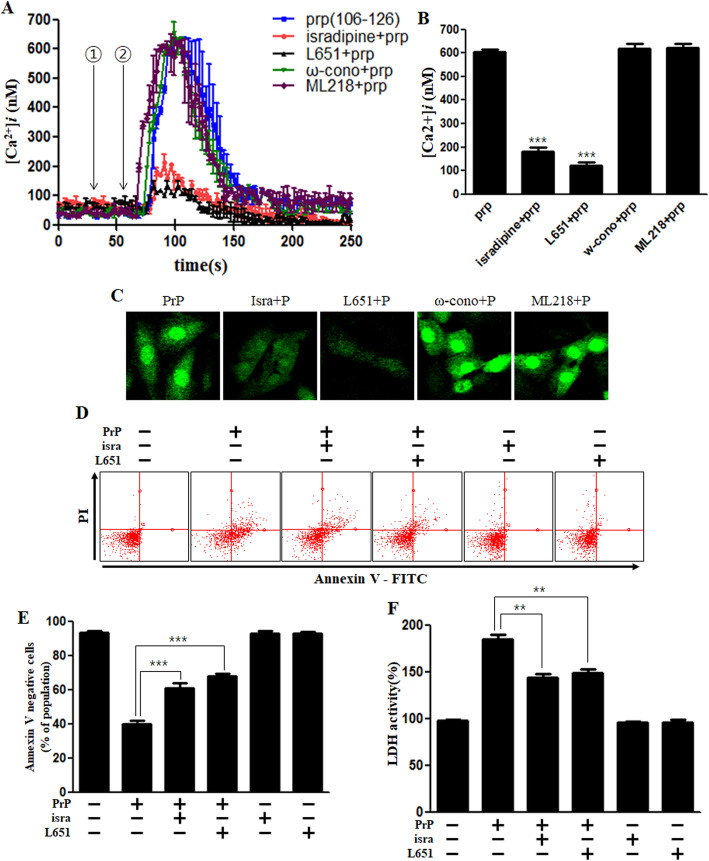Fig. 3.
PrP (106–126)-mediated increase in intracellular Ca2+ occurs via L-type calcium channel. a SK-N-SH cells were exposed to fluo-4 AM and the alterations in Ca2+ levels were evaluated using confocal microscopy. The time point of isradipine (10 μM), L651,582 (20 μM) (L-type calcium channel blocker), ω-conotoxin GVIA (20 nM) (T-type calcium channel blocker) or ML218 (2 μM) (N-type calcium channel blocker) treatments is designated by the ① arrow and 100 μM of PrP (106–126) treatment is indicated by the ② arrow. Data are represented as mean ± SEM. [Ca2+]i was measured at 200 s after the treatment in three independent experiments. b The bar graph represents the average of the peak value of calcium levels. c Green fluorescence (fluo-4) intensity represents intracellular calcium concentration in SK-N-SH cells using confocal microscopy, indicate that L-type calcium channel blockers decreased PrP-mediated Ca2+ influx. d SK-N-SH cells were incubated with isradipine or L651,582 for 1 h and then exposed to PrP (106–126) (100 μM) for 24 h. Cell viability was assessed by annexin V assay using FITC-annexin V, indicate that isradipine and L651,582 decreased PrP-mediated neurotoxicity. e The bar graph represents the average number of annexin V negative cells. f LDH assay was performed to measure LDH released into the medium. Annexin V assay and LDH assay results represent at least three independent experiments. Data are expressed as the mean ± SEM. ** p < 0.01, *** p < 0.001; significant differences between each treatment group (Welch’s T-test). PrP, Prion peptide (106–126); isra, isradipine; ω-cono, ω-conotoxin GVIA

